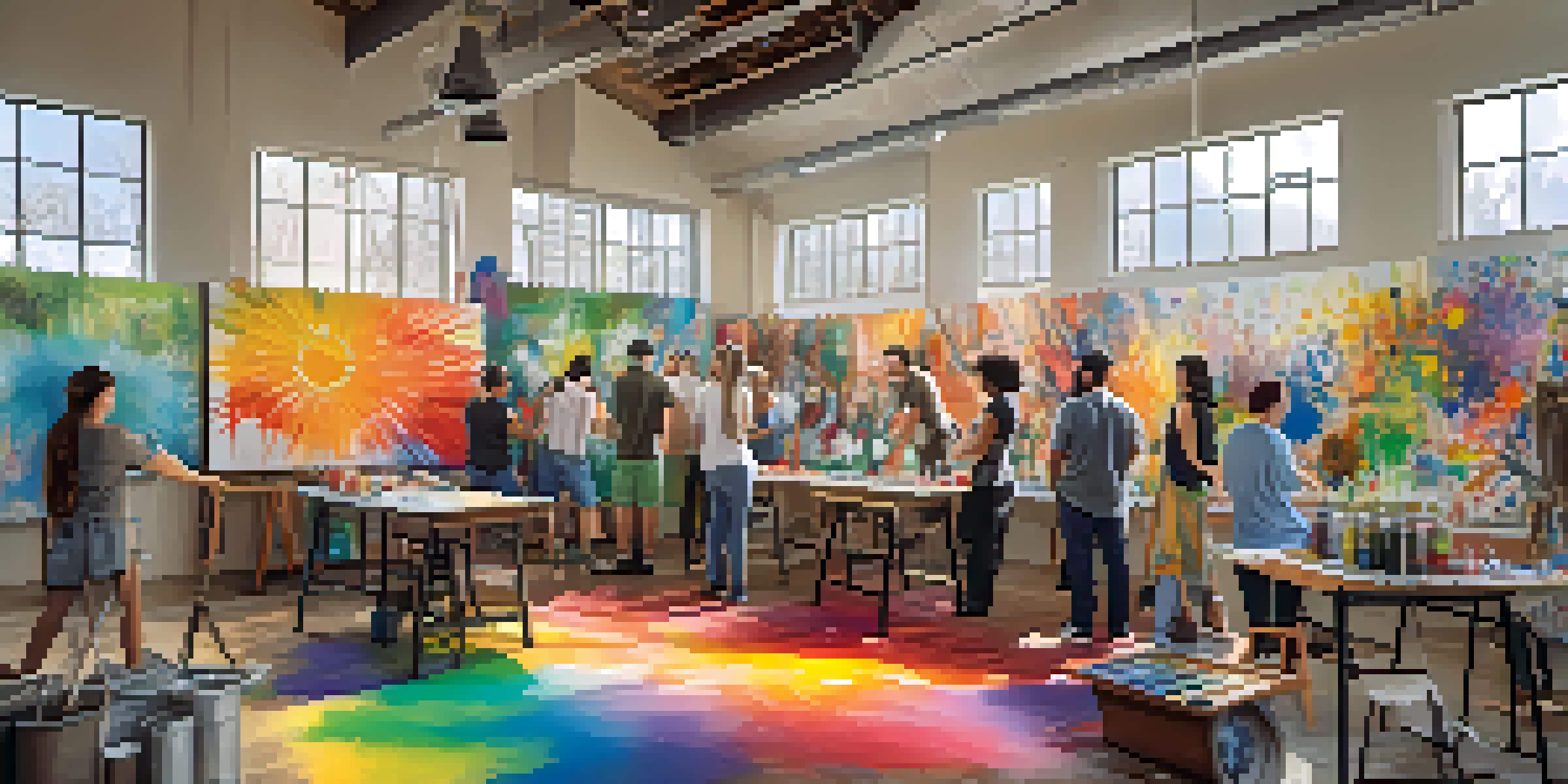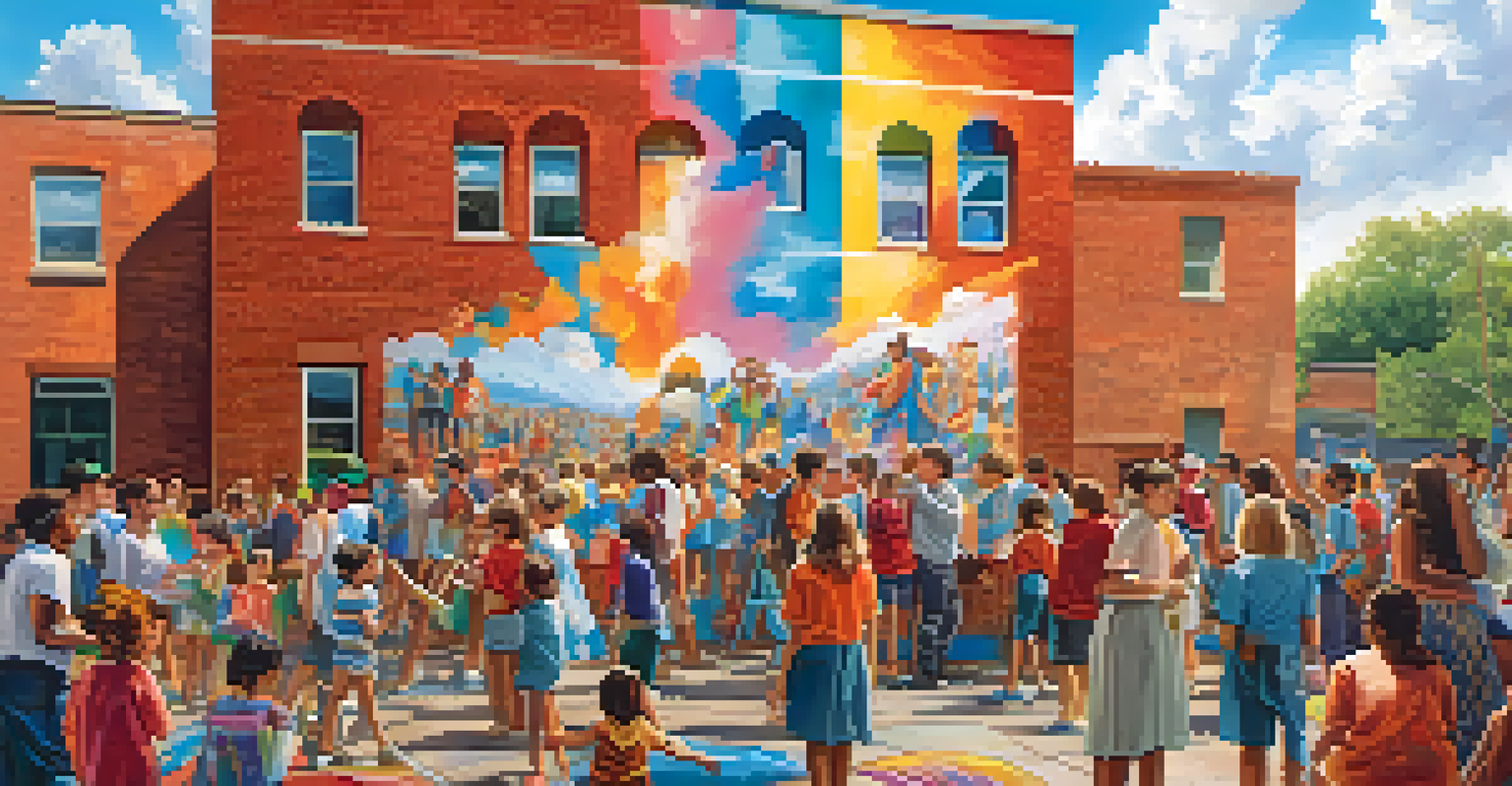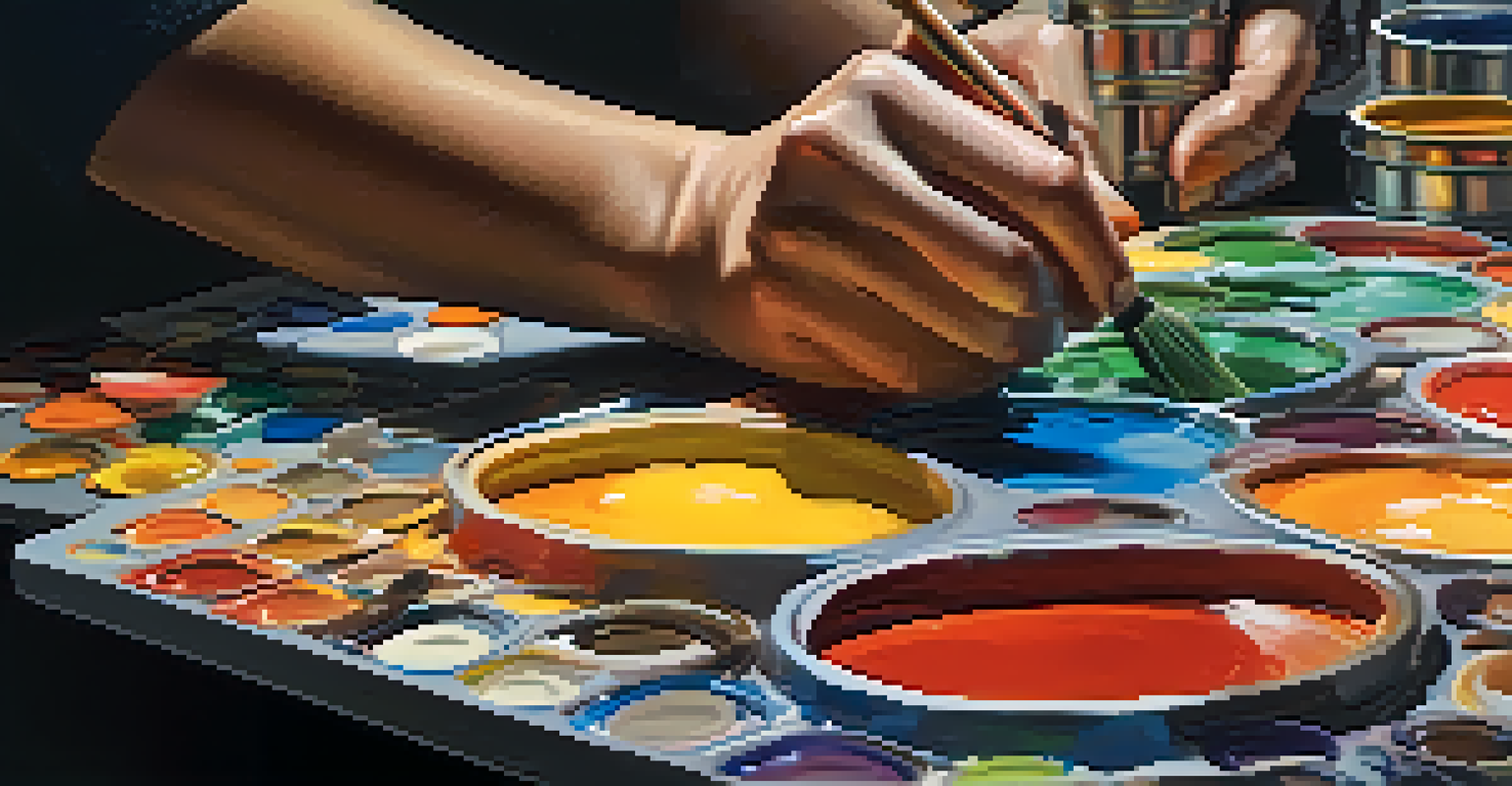The Benefits of Collaborative Art Projects for Painters Today

Fostering Creativity Through Collaboration
Collaborative art projects can ignite a spark of creativity that might otherwise remain dormant. When artists come together, they share different perspectives and techniques, leading to innovative ideas that can elevate their individual work. For example, a painter might experiment with a new style after discussing concepts with a sculpture artist, expanding their artistic horizons.
Creativity is the power to connect the seemingly unconnected.
This exchange of ideas helps break down creative blocks, allowing artists to explore new mediums or approaches they hadn't considered before. Collaboration can provide the motivation needed to step outside of one’s comfort zone. By working together, painters can create a vibrant atmosphere that encourages experimentation and risk-taking.
Moreover, these projects often lead to unexpected results that can surprise and delight both the artists and their audience. The joy of seeing how different artistic visions can blend into a cohesive piece is a rewarding experience, and it often inspires further collaboration in the future.
Building Community and Connections Among Artists
One of the most significant benefits of collaborative art projects is the sense of community they foster. Artists often work in isolation, but projects that encourage teamwork create bonds that can last for years. These connections can lead to lasting friendships, mentorships, and a supportive network that artists can lean on throughout their careers.

Collaboration also opens doors to new opportunities. By working with others, painters can expand their reach and gain exposure to different audiences. This can lead to joint exhibitions or collective showcases that highlight their work in new and exciting ways.
Collaboration Sparks Creativity
Collaborative art projects encourage artists to share diverse perspectives, leading to innovative ideas and techniques.
In essence, these projects turn solitary endeavors into shared journeys, making the art-making process more enjoyable and fulfilling. The camaraderie found in collaboration not only enhances the artistic experience but also contributes to a sense of belonging in the broader art community.
Encouraging Skill Development and Learning
Working with others can be an incredible learning experience for painters. Each artist brings unique skills and techniques to the table, providing ample opportunities for peer learning. For instance, a painter might learn advanced mixing techniques from a colleague or gain insights into composition from a fellow artist's approach.
Alone we can do so little; together we can do so much.
This collaborative environment encourages artists to teach and learn from each other, enhancing their overall skill set. Workshops and group projects often feature critiques and feedback sessions, which can significantly improve an artist’s work. Engaging in this kind of constructive dialogue can illuminate blind spots in one’s practice that they may not have noticed alone.
Moreover, the informal atmosphere of collaborative projects often makes it easier to ask questions and seek advice. This shared commitment to growth and improvement cultivates a culture of learning that can be incredibly beneficial for all involved.
Creating Unique Pieces Through Diverse Perspectives
When artists from different backgrounds come together, the resulting artwork often reflects a rich tapestry of perspectives. This diversity can lead to unique pieces that would not have been possible if the artists had worked alone. For example, a collaborative mural might combine elements of street art with classical techniques, resulting in a striking visual dialogue.
Such projects allow for the blending of styles, themes, and cultural influences, creating art that resonates with a broader audience. This fusion not only enriches the final product but also serves as a conversation starter about the various influences that shape artistic expression.
Building Community Among Artists
Working together fosters lasting connections, creating a supportive network that enhances both artistic experiences and career opportunities.
Ultimately, the beauty of collaboration lies in its ability to transcend individual limits, allowing artists to create something that is truly greater than the sum of its parts. These unique pieces often tell a story that embodies the collective vision and experience of the artists involved.
Boosting Visibility and Recognition for Artists
Collaborative art projects can significantly enhance an artist’s visibility in the art world. When multiple artists come together for a project, they pool their audiences, each bringing their followers to the table. This increased exposure can lead to new opportunities for exhibitions, sales, and collaborations.
Additionally, participating in collaborative projects can help artists build their portfolios with diverse work. This can be particularly beneficial for emerging artists looking to establish a name for themselves. Showcasing collaborative pieces can demonstrate versatility and a willingness to experiment, qualities that many galleries and collectors appreciate.
Moreover, the excitement around collaborative projects often garners media attention, further amplifying the artists' profiles. By participating in these initiatives, painters can elevate their standing and reach in the competitive art scene.
Enhancing Emotional Well-Being Through Art
Artistic expression has long been recognized for its mental health benefits, and collaborative projects can amplify these effects. Working with others fosters a sense of belonging and support, which can be incredibly therapeutic for artists. Sharing the creative process can mitigate feelings of isolation and promote a sense of community, which is vital for emotional well-being.
Additionally, the joy of creating art with others can lead to increased motivation and satisfaction. The camaraderie found in these projects often translates to a more enjoyable and fulfilling artistic experience. This positive emotional exchange can uplift spirits and inspire artists to continue pushing their creative boundaries.
Art as a Platform for Change
Collective art initiatives enable artists to address social issues, amplifying their messages and inspiring community engagement.
Moreover, collaboration often involves celebrating each other's successes, which can boost confidence and self-esteem. This shared journey not only enriches the art produced but also nurtures the artists’ mental health in meaningful ways.
Promoting Social Change Through Collective Art Initiatives
Collaborative art projects can serve as powerful platforms for social change. When artists unite for a cause, their combined voices can create impactful messages that resonate with audiences. For instance, murals or installations addressing social issues can raise awareness and inspire action, demonstrating art's role in advocacy.
By collaborating, artists can amplify their messages and reach a broader audience. This collective approach often leads to engaging community discussions, encouraging viewers to reflect on critical issues. The synergy of multiple artists can transform a simple project into a movement, highlighting the power of art as a vehicle for change.

Ultimately, these art initiatives can foster a sense of purpose among artists, motivating them to use their talents for the greater good. Together, they can create works that not only enrich their own practices but also contribute to a more just and equitable society.